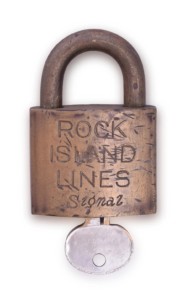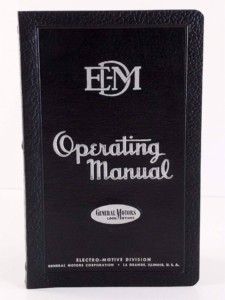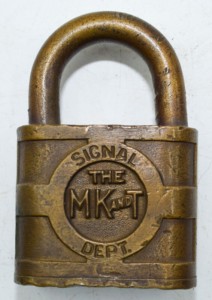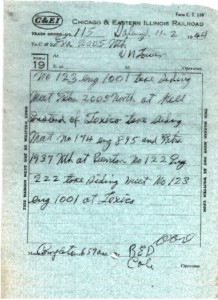Are you interested in getting started in collecting railroad memorabilia and don’t know where to get started? Are you concerned with budgets and railroad themed items are unattainable? Perhaps we can provide some suggestions to help get you started in this hobby. RCAI is committed to help connect collectors and educate everyone from an entry-level item to the most expensive, once in a lifetime items available – and all points in between.
You don’t have to have a large bank account or rely on luck finding items at a road side antique store to enjoy collecting railroadiana. A great place to start is collecting paper – including railroad timetables, passes and even copies of railroad train orders. This paper can be colorful, feature railroad logos and even provide hours of entertainment by searching the history of the individual or railroad listed on the item. Timetables generally include maps and train schedules and can be fascinating to follow and recreate using online maps.
Some lantern prices over the last few years can be intimidating and honestly are not indicative of prices for 99% of the lanterns available to collectors. Lanterns are generally always railroad marked, either on the lid (top) or on the globe (glass). Short lanterns, which started to appear in the 1920s lasted through the 1960s when battery-operated devices became more widely available. Short globe lanterns are a great place to begin your collecting journey. Most can be purchased for $30-$75 dollars with nearly all of them under $100. Rarity is what drives up prices either because of the railroad markings or color of the globe. In addition, parts are still widely available for short globe lanterns and with affordable prices, it allows you to light the flame and use the lantern if you so choose.
Locomotive operators manuals are a fascinating item to collect and provide hours of entertainment to the collector. These manuals were produced by the locomotive manufacturers such as Electro-Motive (EMD), General Electric (GE), ALCO and Fair Banks Morse and are similar to an owner’s manual that comes with new cars and trucks. They give specific instructions on how to operate the locomotive, how to do basic safety and maintenance checks and even trouble shooting items. Many of them come with dimensional covers, with colorful graphics and descriptions. Additionally, these manuals are easy to store and display. Many manuals can be purchased from anywhere from $5.00 to $40.00; with rare and exceptional manuals sometimes reaching the $300-$500 mark.
Railroad-marked locks and keys have been used by the railroads since the need for security arose to lock switches, cargo and buildings. Locks and keys are plentiful – nearly all railroads marked their items in some form or fashion and their history is easily traceable. Steel locks, which started appearing in the 1950s and still used by railroads today can easily be found for less than $40.00 in some cases. Brass locks, while the highly desirable “fancy back” locks can get into four figures, many brass locks some with ornate railroad logos or markings can easily be found for $50-$100.00.
Despite being one of the most popular collectibles, railroad-marked china and silver are a great entry point for collectors. Yes, some rare and unusual china can get into the thousands of dollars; but the vast majority of pieces of railroad china can be purchased between $20.00-$100.00. Each railroad had specific patterns and color schemes and yes, you can even utilize the china and silver to eat off of if you want to recreate dinner on your favorite railroad’s china. Additionally, railroad-marked china and silver is widely available through online auctions, train shows and antique stores across the country. Who knows, maybe you can even find a rare piece of china that instantly sends increases the value of your collection.












